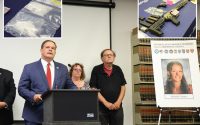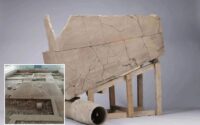Satellite, rocket miss collision by 20 feet: ‘worst-case scenario’
A “worst-case scenario” was thwarted on Friday when two large pieces of space debris narrowly missed each other, according to LeoLabs.
LeoLabs said the debris included the defunct satellite Cosmos 2361 and an SL-8 rocket body, which are two of countless pieces of space debris currently in low-Earth orbit.
According to NASA, objects in low-Earth orbit (or LEO) involve objects orbiting our planet at an altitude of 1,200 miles (2,000 km) or less.
On Friday, Cosmos 2381 and the SL-8 rocket body nearly collided at an altitude of about 611 miles (984 km).
LeoLabs determined that the two pieces of space debris missed each other by about 20 feet (6 meters), with an error margin of only a few tens of meters.
“We’ve identified this kind of collision — between two massive derelict objects — as a ‘worst-case scenario’ because it’s largely out of our control and would likely result in a ripple effect of dangerous collisional encounters,” LeoLabs said in a tweet.

They said that had the Cosmos 2381 and SL-8 rocket body smashed into each other, the collision would have resulted in thousands of new debris fragments that would remain for decades.
This near-collision is significant because it illustrates how much space debris is floating around in low-Earth orbit.
According to LeoLabs, a layer of the LEO that’s only about 62 miles thick contains an estimated 160 SL-8 rocket bodies, along with their 160 payloads, that were deployed over 20 years ago.
This “bad neighborhood” in the LEO, said LeoLabs, is located between altitudes of 950 and 1050 km and continues to be a hotspot for debris collisions.
These collisions and near-collisions in LEO remain top of mind for many.
Because in addition to being populated with defunct space debris, the LEO region is also considered an area near enough to Earth for convenient transportation, communication, observation and resupply, according to NASA.
In fact, LEO is where the International Space Station currently orbits and where many proposed future platforms will be located.


